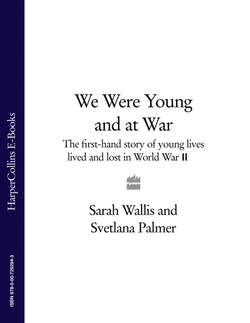Читать книгу We Were Young and at War: The first-hand story of young lives lived and lost in World War Two - Sarah Wallis - Страница 7
CHAPTER ONE The German Invasion of Poland September-October 1939
Оглавление‘We’ll see what will happen to me…’
Throughout the summer of 1939 governments across Europe hoped war could be prevented, or at least delayed. Though France and Britain did not respond when Hitler annexed Austria in March 1938 and Czech Sudetenland in September, they drew a line at Hitler’s claims on Poland. Hoping their alliance would serve as a deterrent, the two countries promised to come to Poland’s aid if Germany invaded. Their calculation was proved wrong. At 4:45 a.m. on 1 September 1939, 1.5 million German soldiers and 2,700 tanks began to cross Polish borders.
Having regained its independence at the end of the First World War, Poland was a lasting symbol of Germany’s humiliating defeat and territorial losses incurred as a result of the 1919 Versailles Peace Treaty. For nearly twenty years Poland had been home to 700,000 ethnic Germans, but animosity was rife, intensified when thousands of Germans were forcibly moved inland in the run up to the war, lest they assist the invader. Now Hitler urged his commanders to liberate their fellow ‘Aryans’ and send ‘every man, woman and child of Polish descent and language to their deaths, without pity or remorse’. Once conquered, Poland would be depopulated and resettled with the ‘pure Aryan master race’.
A country made up of many ethnic minorities, Poland was also home to 3 million Jews, the largest Jewish community in Europe. On receiving news of the German invasion, thousands fled their homes, aware of Hitler’s threats to ‘annihilate the Jewish race in Europe’. While his neighbours fled, fifteen-year-old Polish Jewish teenager Dawid Sierakowiak and his family decided to stay put in their home town of Łódź in central Poland. With no savings to pay for any means of escape, and unsure which way to go, they decided to face their fate in the city.
Sixteen-year-old Polish teenager Edward Niesobski, from the small border town of Ostrów in western Poland, knew war was imminent. As a member of the Polish Scout Movement, which promoted the nation’s independent spirit among the young, Edward had been undergoing regular paramilitary training for months, expecting to defend his country when the time came.
Dawid Sierakowiak recorded his thoughts and experiences in a diary he had started earlier that summer, but Edward Niesobski began to write only on the day of the German invasion itself. While waiting for instructions from his scout leader on the plan of action and his own role, Edward recorded the stark contrast between his romantic image of war and the actual events on the day.
